Tenebrae (darkness) is the morning Offices for Triduum, consisting of Matins and Lauds. Wednesday's Tenebrae is Matins and Lauds of Holy Thursday, Thursday's is of Good Friday, etc. As the name suggests, each service begins before sundown and ends after nightfall.
As the first Office, Matins is the start of the liturgical day, meaning that Holy Thursday begins on Wednesday evening. Vespers, the evening Office, is sung at the end of the Holy Thursday liturgy, before Good Friday begins with Tenebrae later that same evening. Vespers is not prayed by those who attend the Good Friday liturgy.
Compline, the final hour of the Office and the end of the liturgical day, is prayed before Tenebrae.
As the first Office, Matins is the start of the liturgical day, meaning that Holy Thursday begins on Wednesday evening. Vespers, the evening Office, is sung at the end of the Holy Thursday liturgy, before Good Friday begins with Tenebrae later that same evening. Vespers is not prayed by those who attend the Good Friday liturgy.
Compline, the final hour of the Office and the end of the liturgical day, is prayed before Tenebrae.
The Church knows that the fullest expression of the liturgical life includes recitation of the major hours of the Office. She also knows that not every stage and state in life allows the laity to consistently pray these hours and she moves these early morning hours to the preceding evening to allow more of her children to pray them during the holiest days of the year.
*Photography Note: Because these photos were taken during the first two evenings of Tenebrae, there is some variation in the appearance of the sanctuary. During Holy Thursday Tenebrae (sung on Wednesday night) the altar is still dressed in antependium, altar cloths, and vesperale. These are removed during the stripping of the altars after Holy Thursday liturgy and the next two nights of Tenebrae are sung in a bare sanctuary. The structure of Tenebrae is the same all three nights.
The fifteen candles in the candelabra, or hearse, and those on the high altar are of unbleached wax, as are used for the Mass for the Dead.
Many of the usual formulas normally found in every hour of the Office are omitted; there is no Invitatory, no Gloria Patri at the end of the Psalms. The Church is in mourning over the Passion and death of her Bridegroom, and her expressions of joy and hope are suppressed.
Many of the usual formulas normally found in every hour of the Office are omitted; there is no Invitatory, no Gloria Patri at the end of the Psalms. The Church is in mourning over the Passion and death of her Bridegroom, and her expressions of joy and hope are suppressed.
Appropriately, some of the most complex chants we have can be found in the Responsories for Good Friday, the saddest and longest of the three nights of Tenebrae. They are often challenging for seasoned singers and may sound strange and unsettled even to ears that are familiar with chant.
Matins and Lauds ushered in Holy Saturday only hours after the conclusion of the Good Friday Liturgy. While the attitude was still one of somber reverence, there was noticeable energy behind the singing on that evening. After the sorrow of the previous 24 hours, we knew that the next day would bring the Easter Vigil and the Resurrection of Christ.
Matins and Lauds ushered in Holy Saturday only hours after the conclusion of the Good Friday Liturgy. While the attitude was still one of somber reverence, there was noticeable energy behind the singing on that evening. After the sorrow of the previous 24 hours, we knew that the next day would bring the Easter Vigil and the Resurrection of Christ.
The texts of Holy Saturday are chilling, full of Psalms and Lessons to be read as Christ speaking from the grave. One of the most striking is the opening antiphon of Lauds:
"O mors, éro mors tua: mórsus tuus éro, inférne."
(O death, I will be thy death. O hell, I will be thy destruction.)
Hosea 13:14
(O death, I will be thy death. O hell, I will be thy destruction.)
Hosea 13:14
The full texts of Tenebrae can be found here.

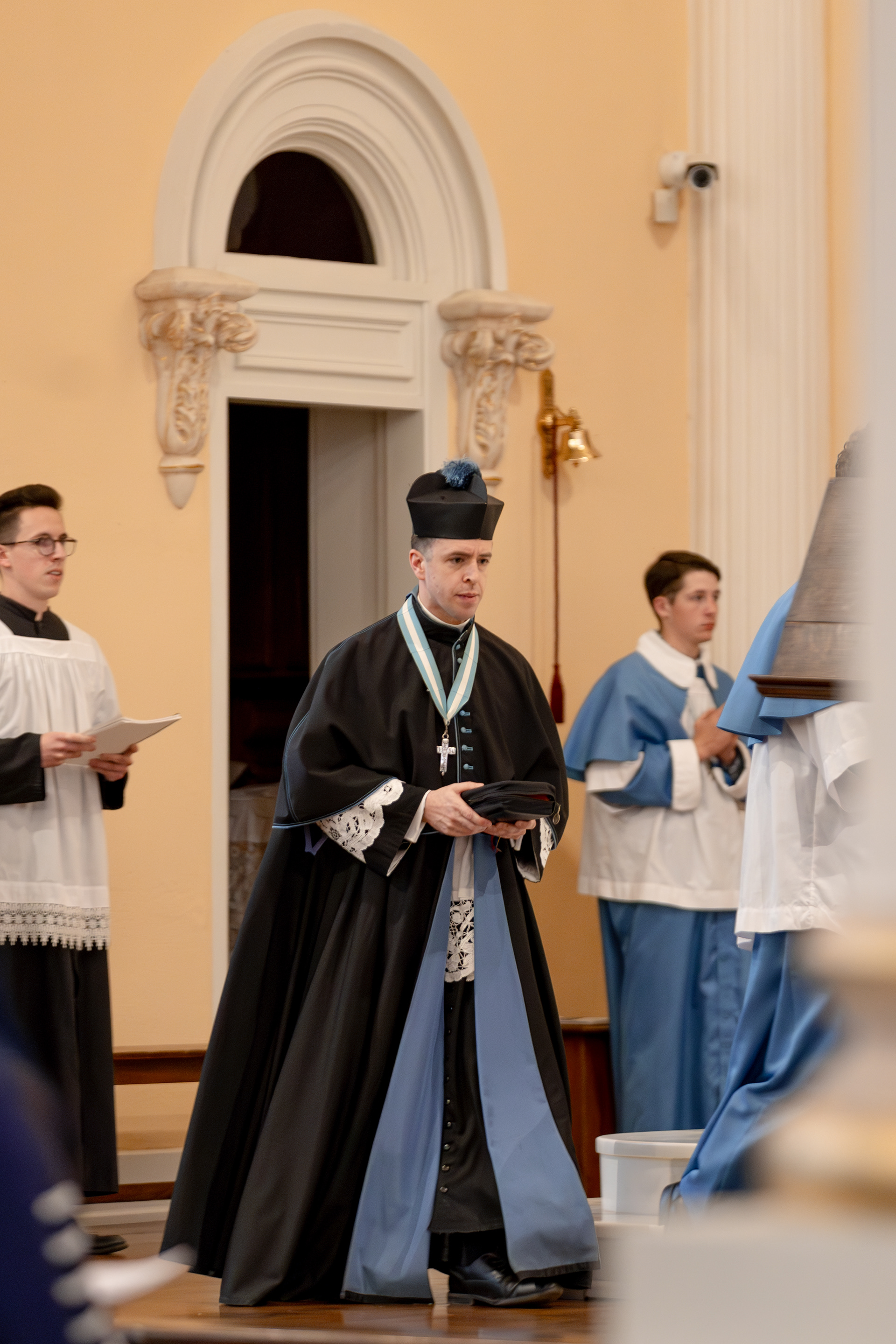
The clergy enter in choir dress. The schola, seated in choir with the clergy, vests in cassock and surplice.
Matins, during Tenebrae or otherwise, is made up of 3 Nocturns consisting of 3 Psalms and 3 Lessons.
14 of the 15 candles on the hearse will be extinguished over the course of the evening, one after each of the 9 Psalms of Matins and the 5 Psalms of Lauds.


Starting with the Officiant, those in choir take turns singing the Lessons. The texts of the Lessons are taken from Lamentations and Isaiah, various books of the New Testament, and the writings of St. Augustine.
The schola sings a Responsory after each Lesson.
The Psalms are sung antiphonally (alternating sides with each verse) as is done whenever the Office is sung communally.
Ordinarily, the Office may be accompanied by the organ, but Tenebrae is to be sung strictly unaccompanied.
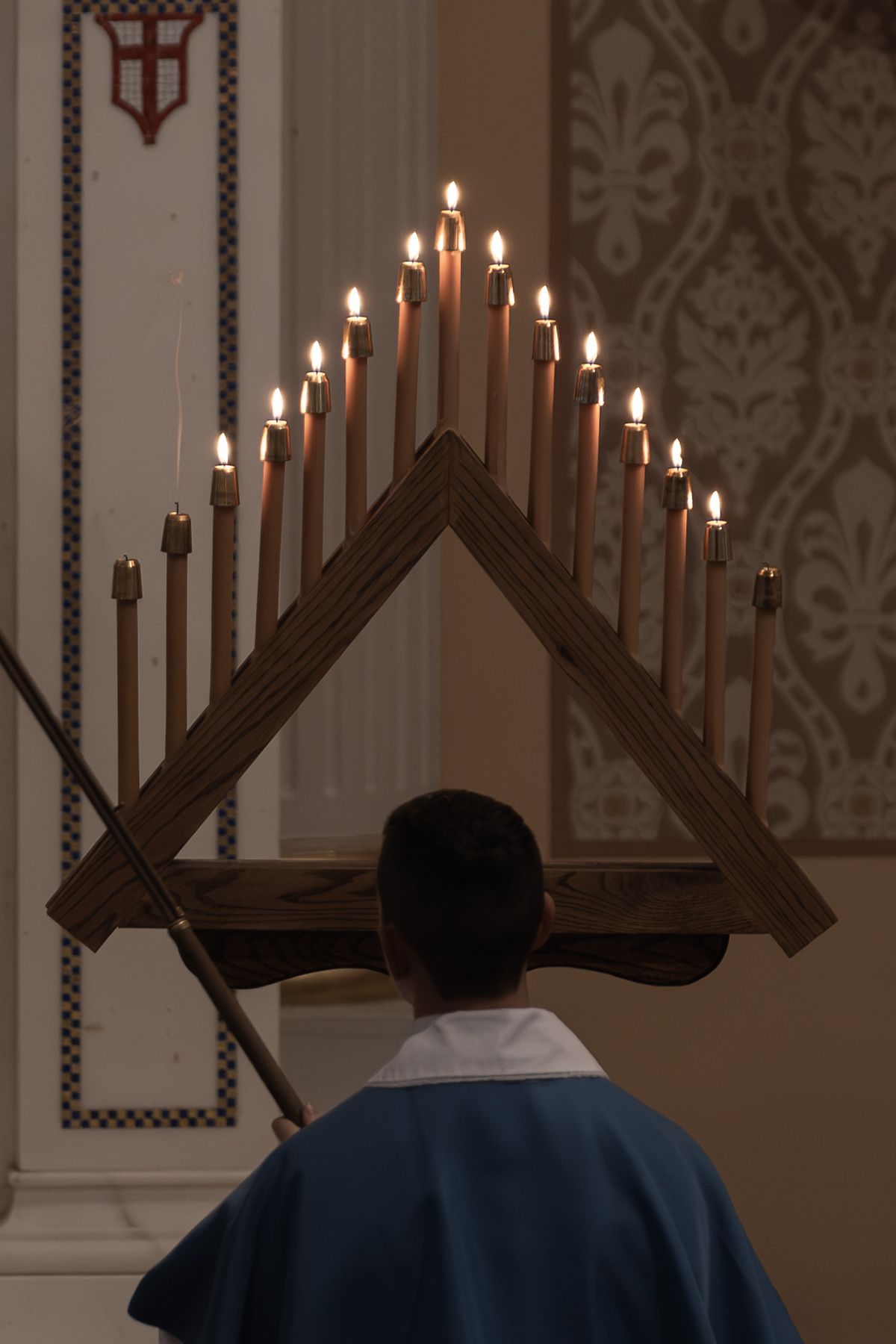

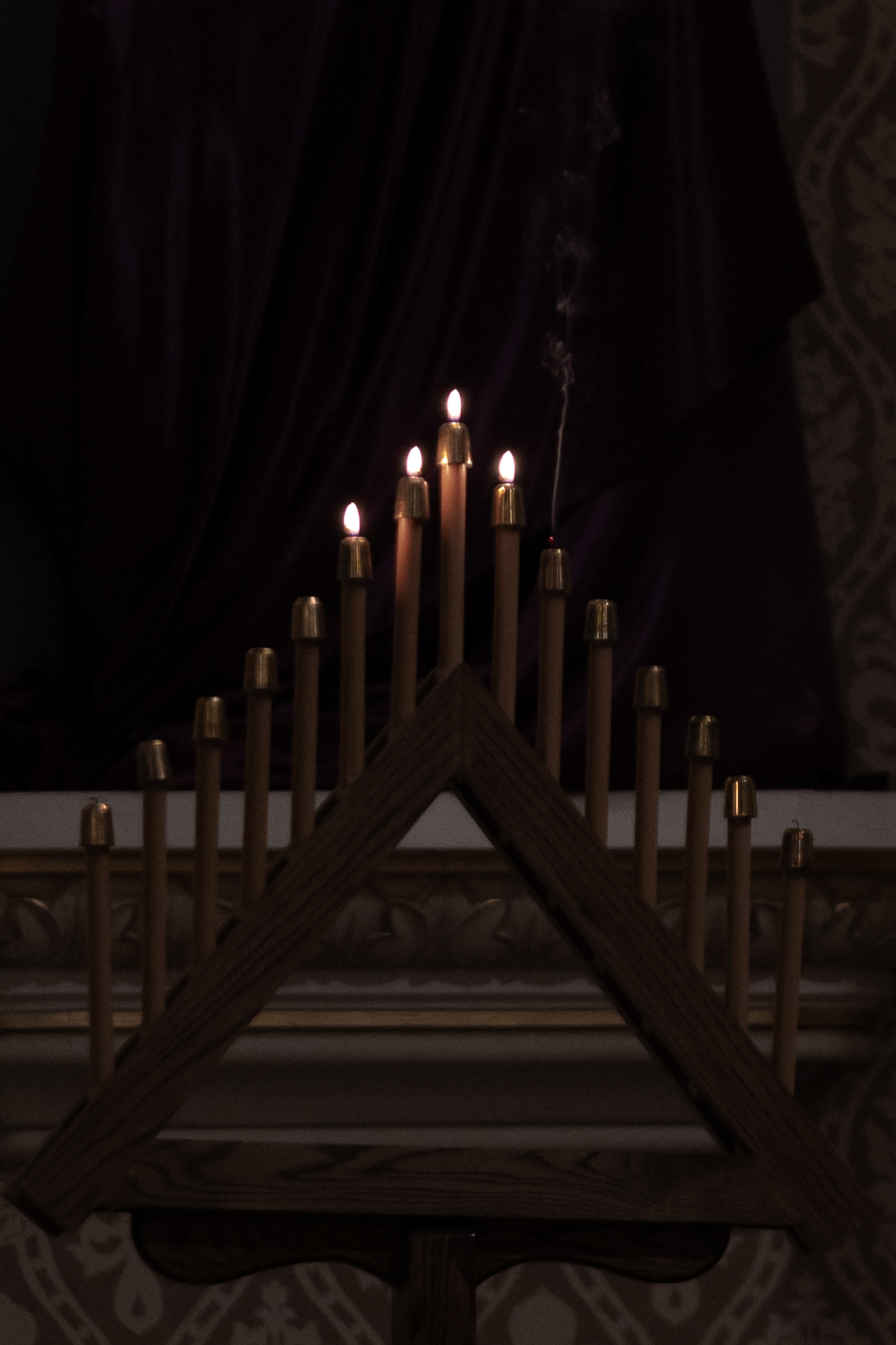
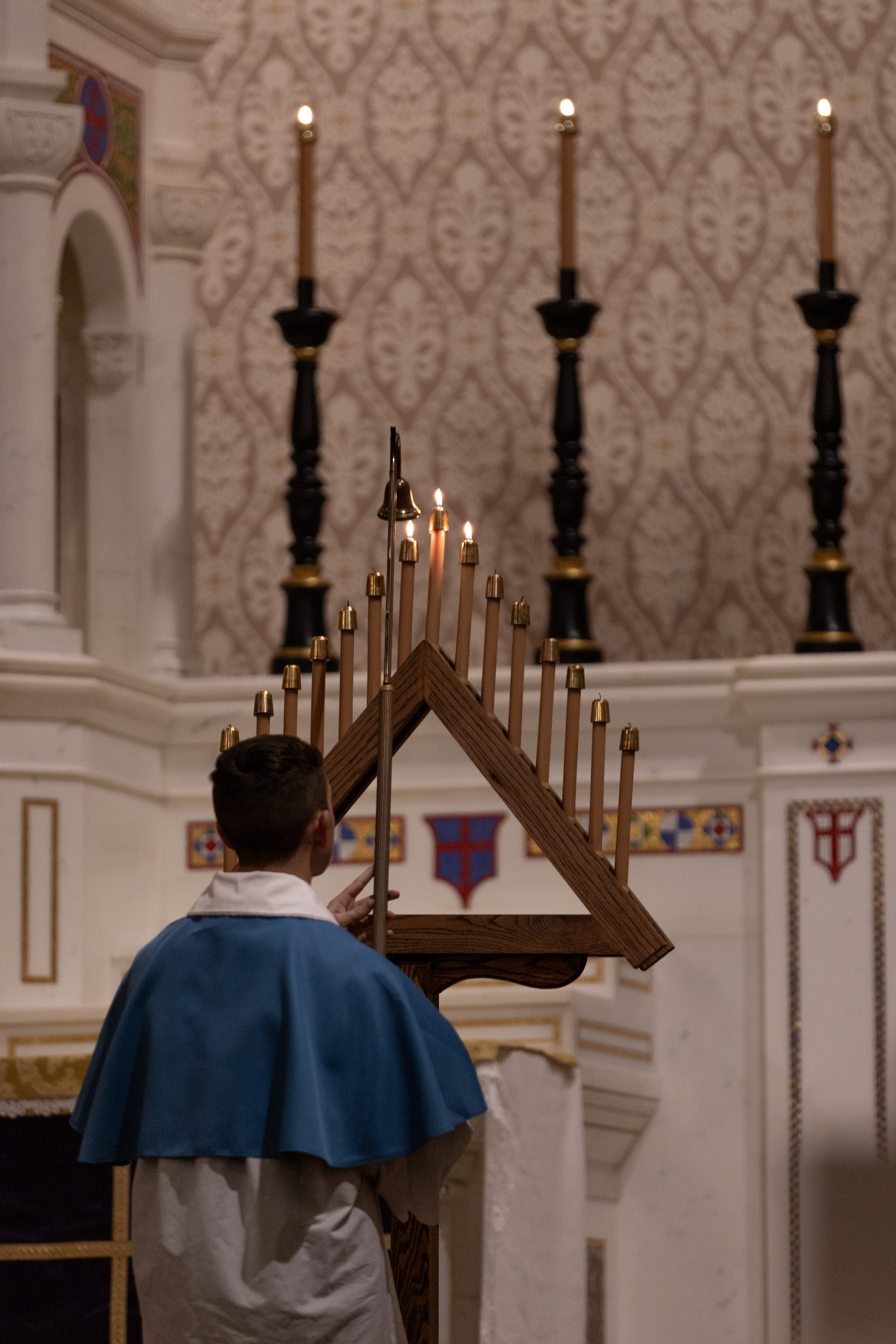
At the end of Lauds, one candle on the hearse remains lit representing Jesus, our Light.
After every other verse of the Benedictus (Canticle of Zechariah), the servers extinguish one of the six candles on the high altar and gradually shut off the church lights.
After every other verse of the Benedictus (Canticle of Zechariah), the servers extinguish one of the six candles on the high altar and gradually shut off the church lights.
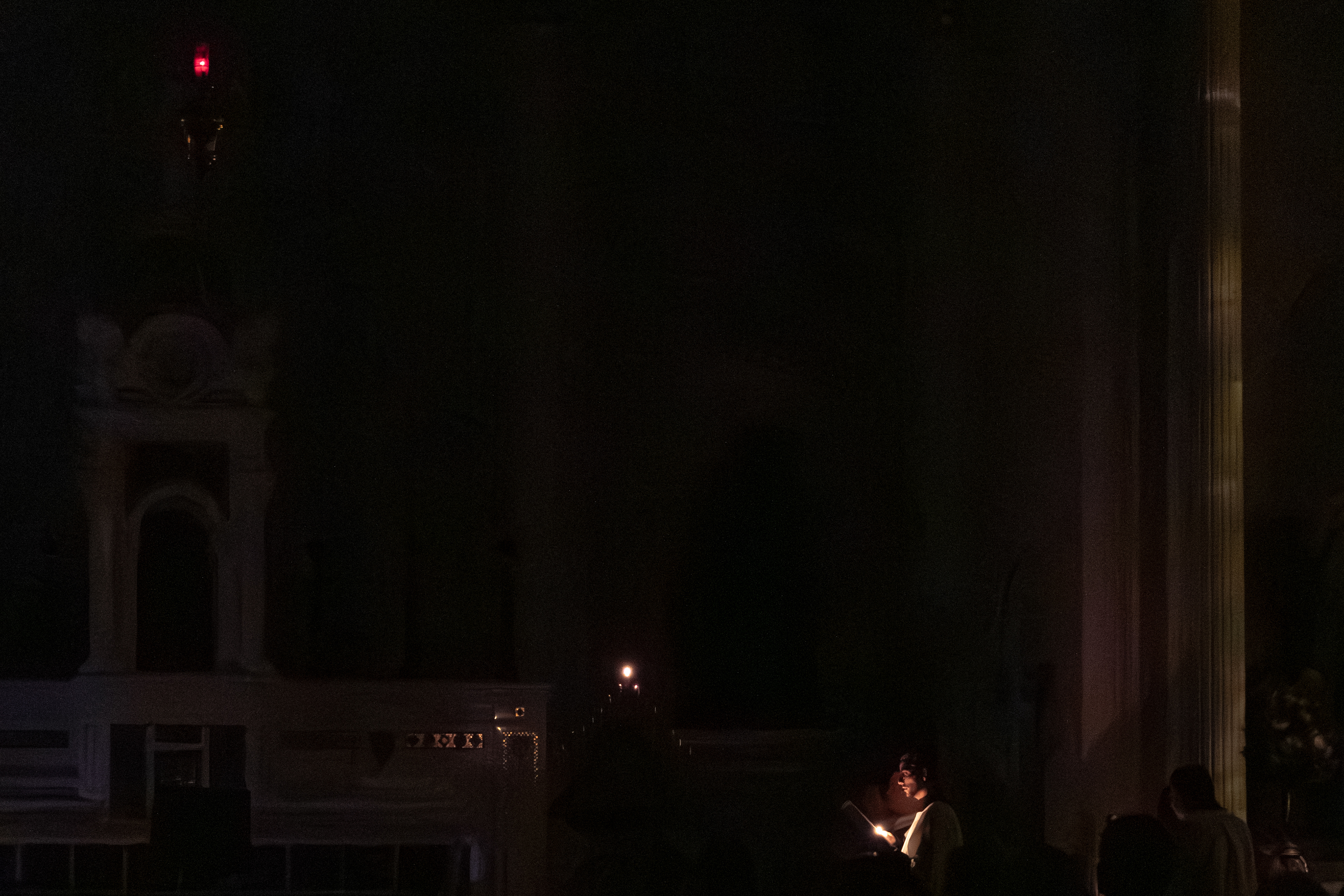
By the end of the Benedictus, it is dark outside and the only light in the church is from the lone candle on the hearse, the lights held by the schola out of necessity, and, on the first night only, the sanctuary lamp.
The schola sings the antiphon Christus Factus Est, adding a little more of the text each night.
Wednesday: "Chrístus fáctus est pro nobis obédiens úsque ad mórtem,"
(Christ became obedient for us to the point of death,)
Thursday: "mórtem autem crúcis."
(even death on a cross.)
Friday: "Propter quod et Deus exaltávit ilum et dédit illi nomen quod est super omne nomen." (Because of this, God greatly exalted Him and bestowed on Him the Name which is above all names.)
Philippians 2:8-9
Listen
Wednesday: "Chrístus fáctus est pro nobis obédiens úsque ad mórtem,"
(Christ became obedient for us to the point of death,)
Thursday: "mórtem autem crúcis."
(even death on a cross.)
Friday: "Propter quod et Deus exaltávit ilum et dédit illi nomen quod est super omne nomen." (Because of this, God greatly exalted Him and bestowed on Him the Name which is above all names.)
Philippians 2:8-9
Listen
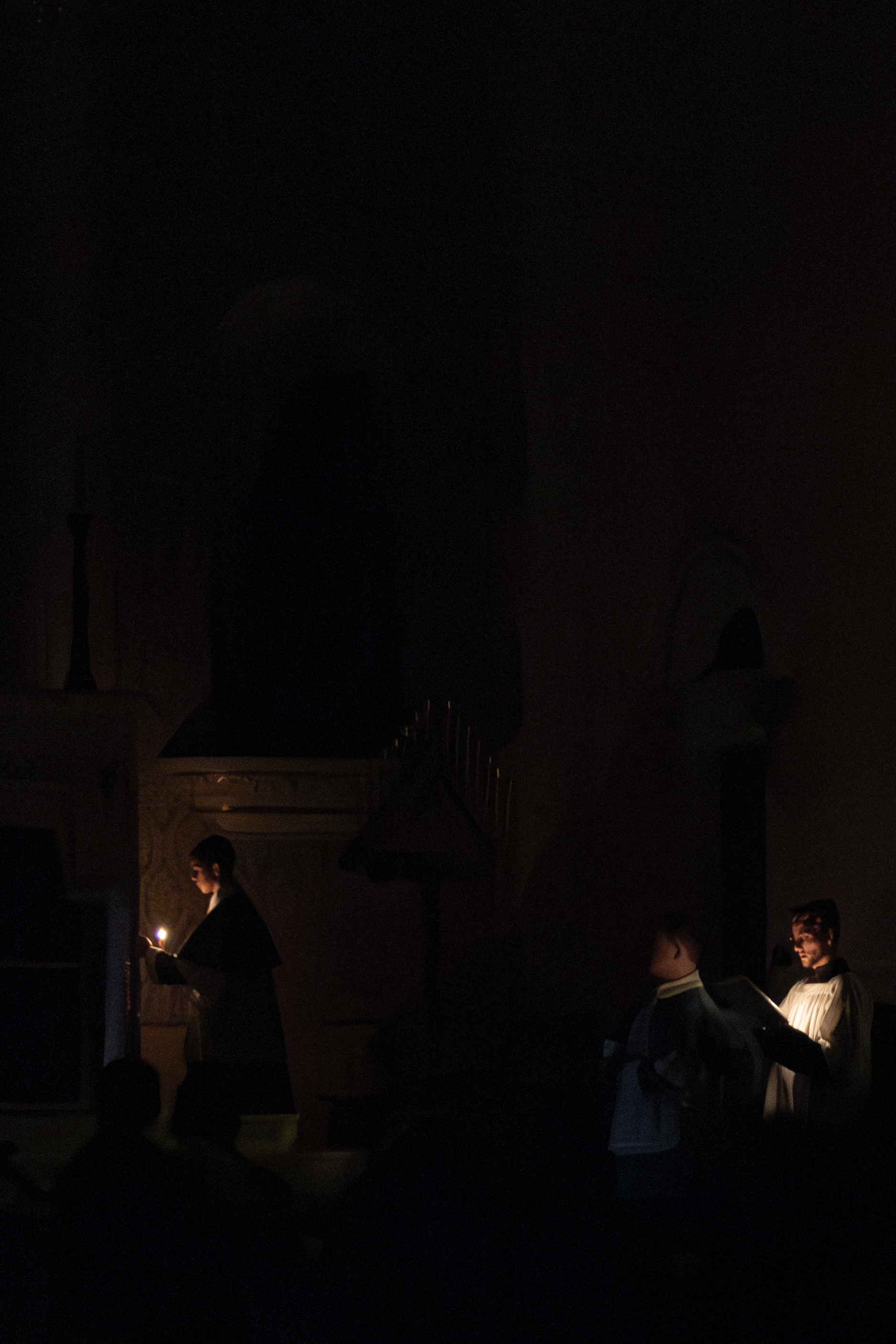
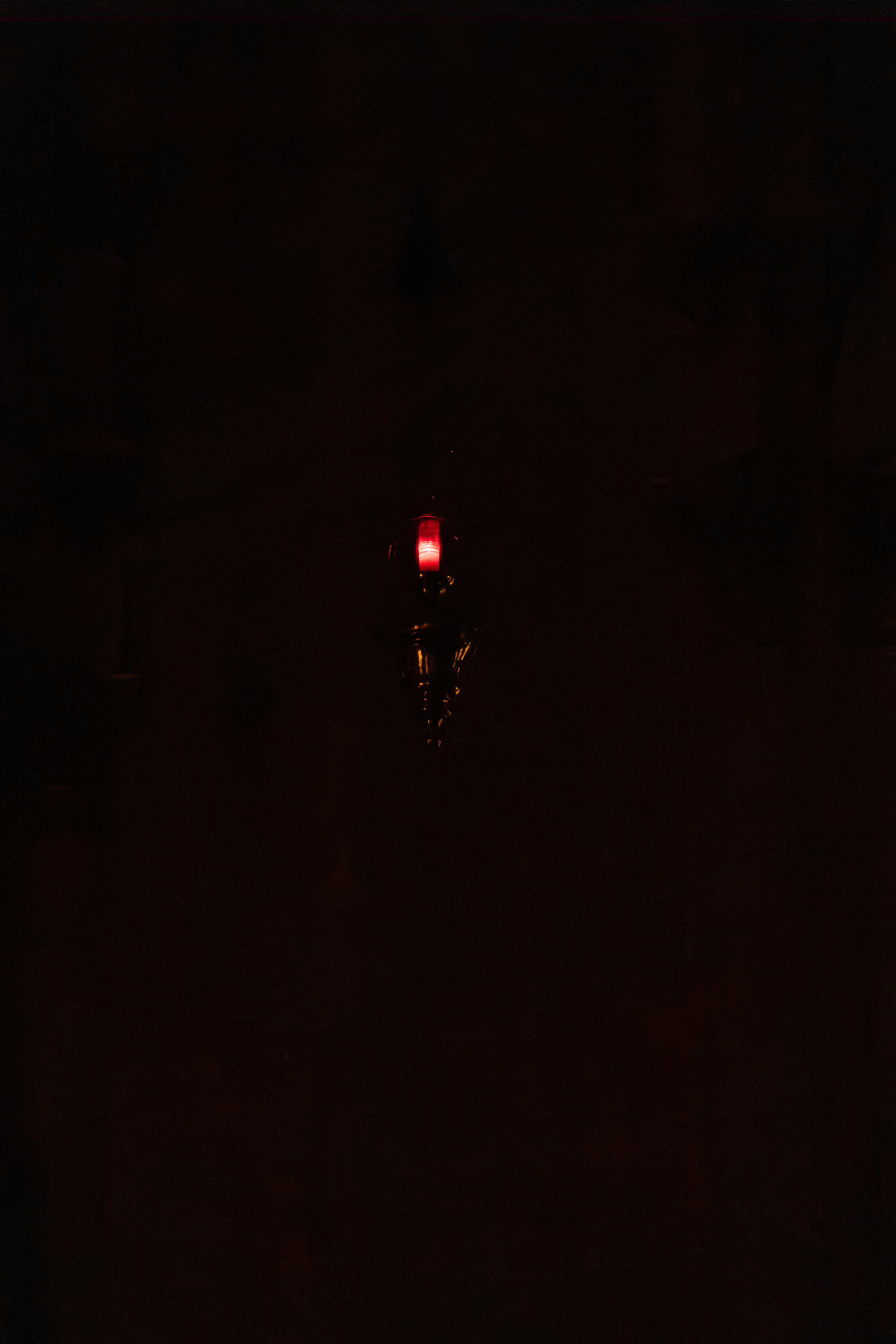
A server removes the lit candle from the hearse and takes it behind the altar. The Pater Noster (Our Father) is said silently. Psalm 51 (Douay Rheims 50) is sung recto tono (on a single pitch rather than a Psalm tone).
The choir extinguishes their candles as the Officiant chants a Collect recto tono.
In complete darkness, strepitus (great noise) is made by all in attendance banging their prayer books or hands on the pews. The noise represents the earthquake and rocks splitting at the death of Christ: all of creation thrown into confusion at the death of its Creator.
After a few moments, the server brings the candle out from behind the altar. The church falls silent, he extinguishes the candle, and the faithful depart in darkness.
After a few moments, the server brings the candle out from behind the altar. The church falls silent, he extinguishes the candle, and the faithful depart in darkness.